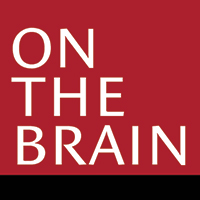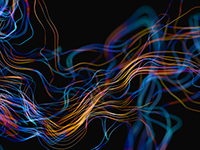Summer 2016
A number of things need to happen for a child to learn to read and to comprehend what she reads, says Nadine Gaab, PhD.
 Gaab, an HMS associate professor of pediatrics, heads a research unit in the Laboratories for Cognitive Neuroscience at Boston Children’s Hospital.
Gaab, an HMS associate professor of pediatrics, heads a research unit in the Laboratories for Cognitive Neuroscience at Boston Children’s Hospital.
Infants must learn to process sounds. By early kindergarten or preschool, the child must learn phonological processing, which is the ability to manipulate the sounds of language, such as adding or deleting sounds to make words. The child must then learn to read single words and develop the vocabulary necessary to read and understand sentences and paragraphs, and, finally, master the ability to read fluently with reasonable speed.
“She has to decode words, she has to have the vocabulary once she decodes the words, she has to know meaning of the words, and she has to read fluently so that she can comprehend a whole paragraph,” says Gaab. “These all have to come together for successful reading comprehension.”

Discover the latest news on the brain from Harvard Medical School
Researchers are revealing more about how the brain and nervous system
work– and translating those insights into new treatments
A number of brain regions are involved in reading and comprehension. Among them are the temporal lobe, which is responsible for phonological awareness and for decoding and discriminating sounds; Broca’s area in the frontal lobe, which governs speech production and language comprehension; and the angular and supramarginal gyrus, which link different parts of the brain so that letter shapes can be put together to form words.
 In addition, there are several important white-matter pathways involved in reading, says Gaab. White matter is a collection of nerve fibers in the brain—so called for the white color of myelin, the fatty substance that insulates the fibers—that help the brain learn and function.
In addition, there are several important white-matter pathways involved in reading, says Gaab. White matter is a collection of nerve fibers in the brain—so called for the white color of myelin, the fatty substance that insulates the fibers—that help the brain learn and function.
Gaab likens these tracts to a highway system that connects the back of the brain’s reading network to the front. In order to read and comprehend, this highway system must be wide enough for multiple pieces of information to travel simultaneously. The highway must also be smooth, so that information can flow at a high rate of speed. And, she says, “You don’t want the information to stop. You don’t want a lot of stop lights.”
In 2012 in the Proceedings of the National Academy of Sciences, neuroscientists at Stanford University reported that reading ability in young children is related to the growth of the brain’s white matter tracts—specifically, the arcuate nucleus, which connects the brain’s language centers, and the interior longitudinal fasciculus, which links these language centers with parts of the brain that process visual information. Strong readers, they discovered, start out with strong signals in both tracts that get stronger over a period of years. The opposite pattern occurs in weaker readers.
Gaab says these white matter tracts are compromised in children with dyslexia, a reading disorder in which she specializes. The tracts may be too narrow, crowded, or bumpy for normal reading and comprehension to occur. Even in fluent readers, subtle white matter differences may affect reading ability.
The good news, she says, is that “after remediation, after intervention, you see changes in these pathways” that may affect a child’s ability to read and comprehend.
Scott Edwards is a freelance science writer based in Massachusetts.
 The Harvard Mahoney Neuroscience Institute hosts a public lecture series to continue its efforts to educate the public on the latest scientific discoveries in neuroscience and translate how these discoveries are relevant in our daily lives.
The Harvard Mahoney Neuroscience Institute hosts a public lecture series to continue its efforts to educate the public on the latest scientific discoveries in neuroscience and translate how these discoveries are relevant in our daily lives.
 Since its founding in 1990, the Harvard Mahoney Neuroscience Institute has helped advance neuroscience at Harvard Medical School by promoting public awareness of the importance of brain research and by helping to fund research at the School’s Department of Neurobiology.
Since its founding in 1990, the Harvard Mahoney Neuroscience Institute has helped advance neuroscience at Harvard Medical School by promoting public awareness of the importance of brain research and by helping to fund research at the School’s Department of Neurobiology.